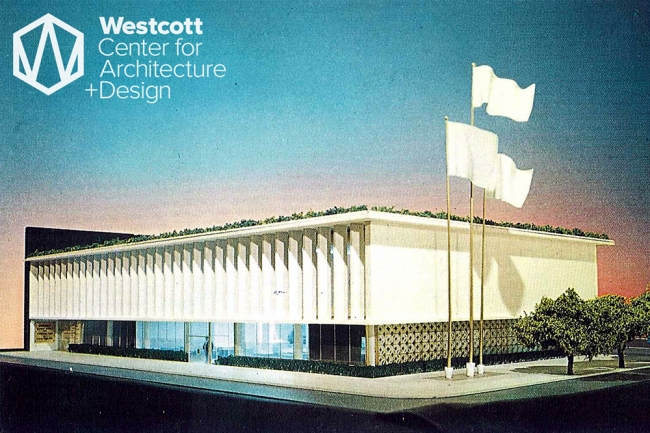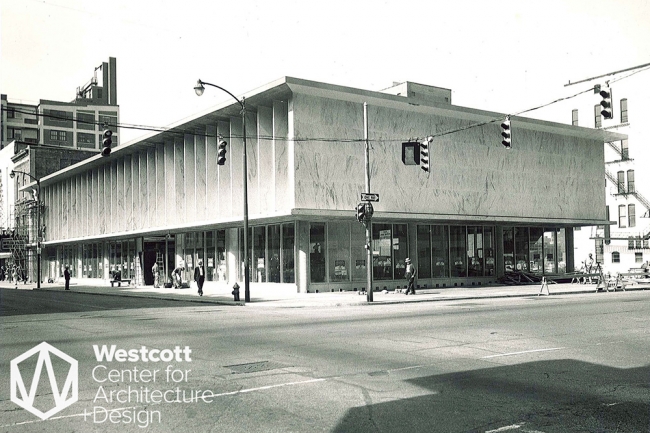During revitalization efforts of downtown Springfield in the 1960s, many local businesses were searching for the means to rebuild the city’s charm and prosperity. Housing the newly merged Springfield Savings Society and Commercial Bank, today Key Bank, a new banking center was designed. Located at 1 South Fountain Avenue, the design of the modern building combines technology, functionality, and beauty, supporting what some called a modern recovery of the city. The building was designed in 1960 by Alfred Shaw and Carl Metz of Chicago and constructed in the following year by the B.G. Danis Company of Dayton.
The design of the bank revolves around the aims of New Formalism, where the “skylines are level,” and the design is “defined at the top by heavy, projecting roof slabs.” Usually designed with smooth and glossy wall surfaces, this style uses a wide range of natural and artificial materials, emphasizing the geometric while exploring the relationship and interaction between nature, human, and architecture. Shaw and Metz’s design incorporates LeCorbusier’s five points for modern architecture from 1929: the pilotis, a roof garden, free-plan, free-façade, and horizontal band of windows.
The two-story bank constructed from modern materials such as steel, concrete, and glass, is set apart from the traditional architecture of downtown supporting the claim that by constructing modern buildings downtown, the revitalization of Springfield is evident. Measuring 75 by 160 feet, the floor plan and layout of the building “emphasizes the Banking Center’s guiding principle of staying close to the people it services.” Including new book keeping machines, air conditioning, and a sixteen thousand pound door to the vault, technology combines with the traditional banking structure to project the success of the late nineteenth century company in a new downtown Springfield.
Local residents were proud of the completion of the new modern banking center and hailed the company for a job well done. The enthusiasm from the community was clear and helped provide a substantial start to the transformation of modernism in Springfield.


